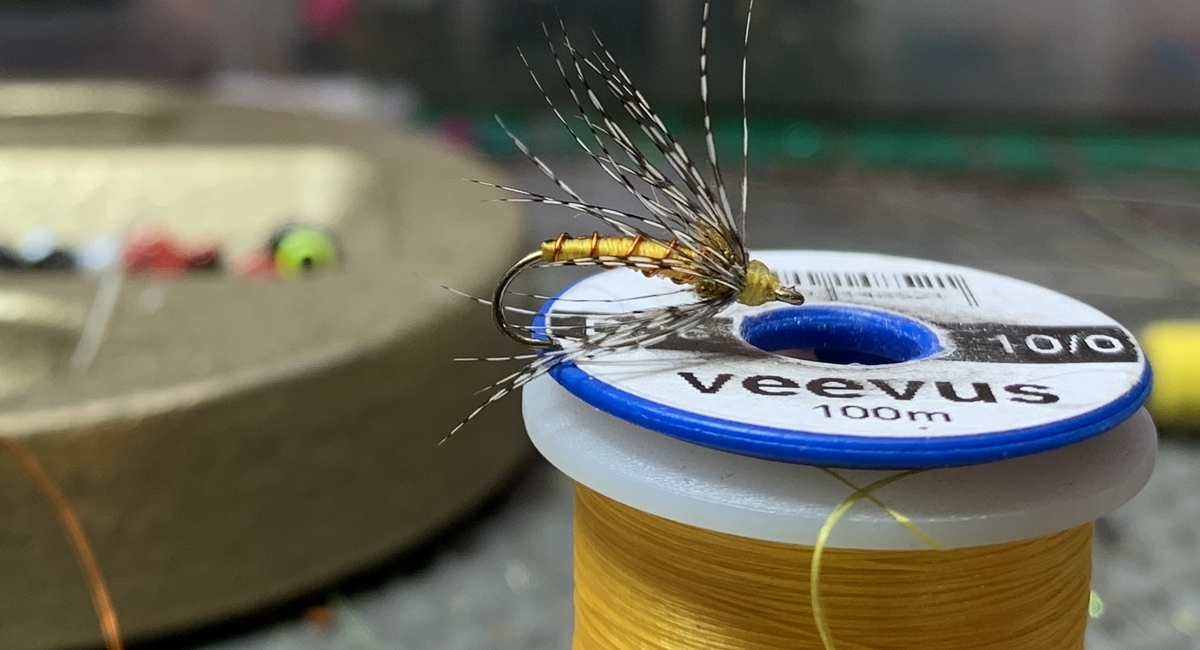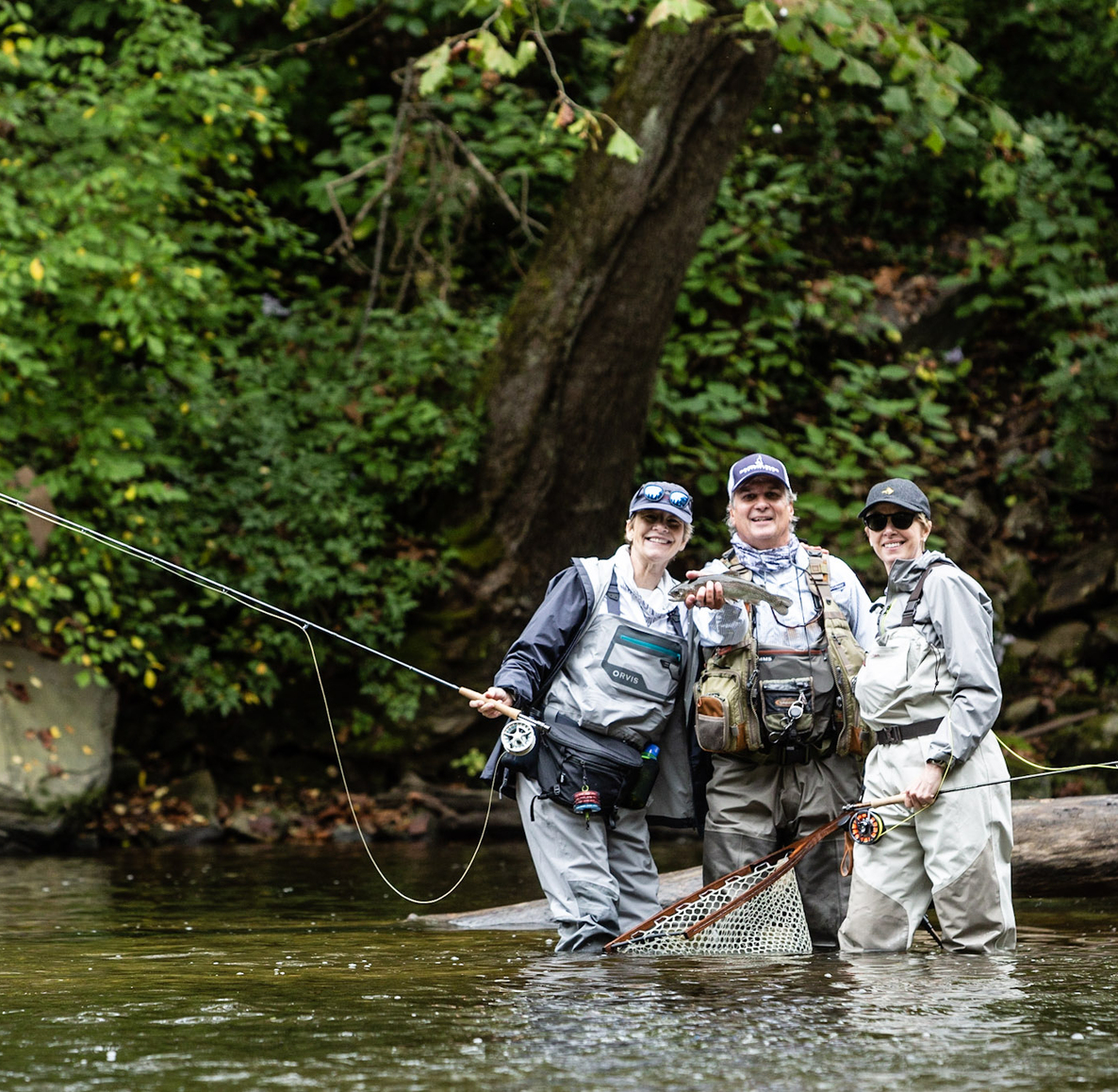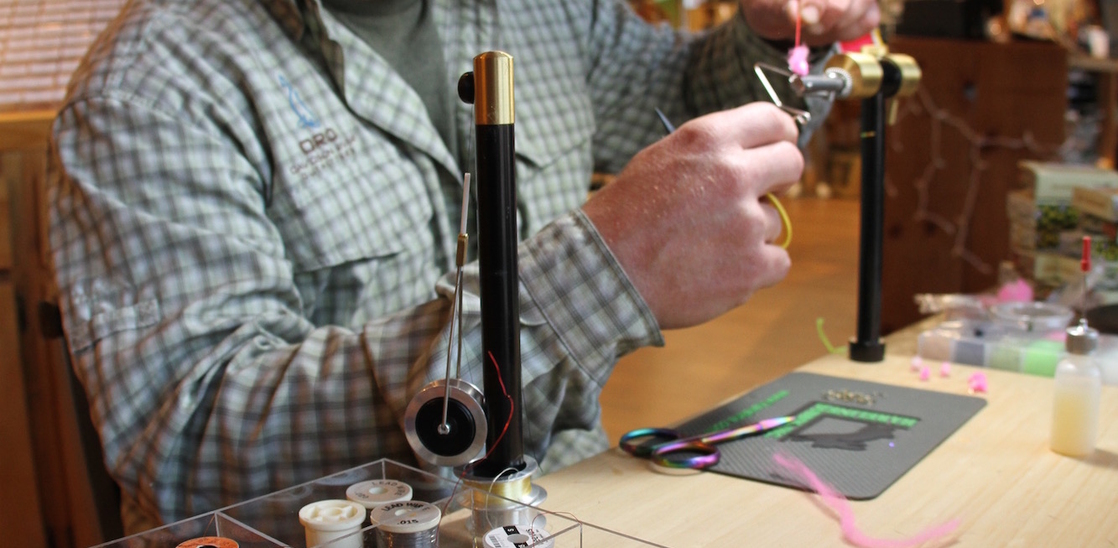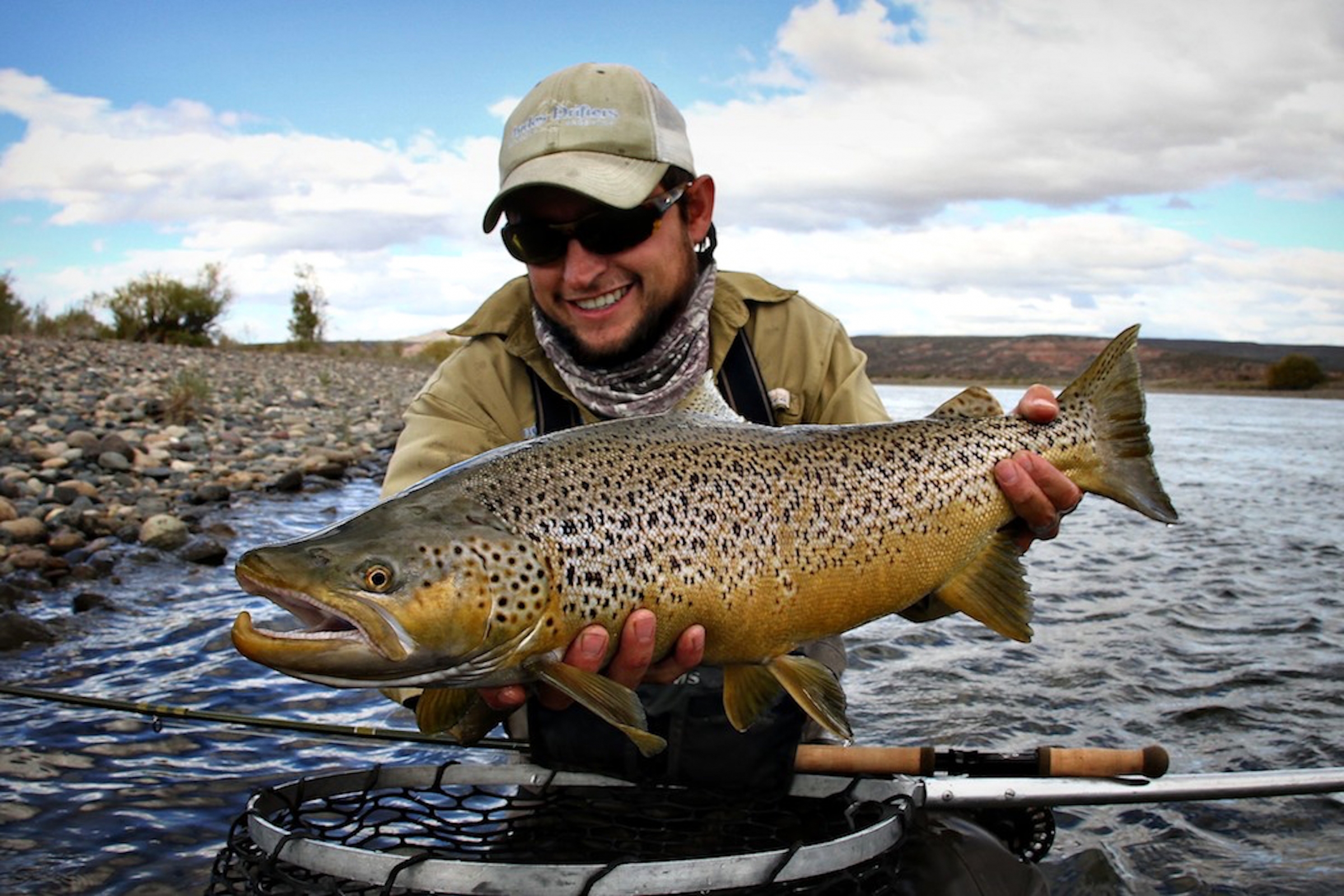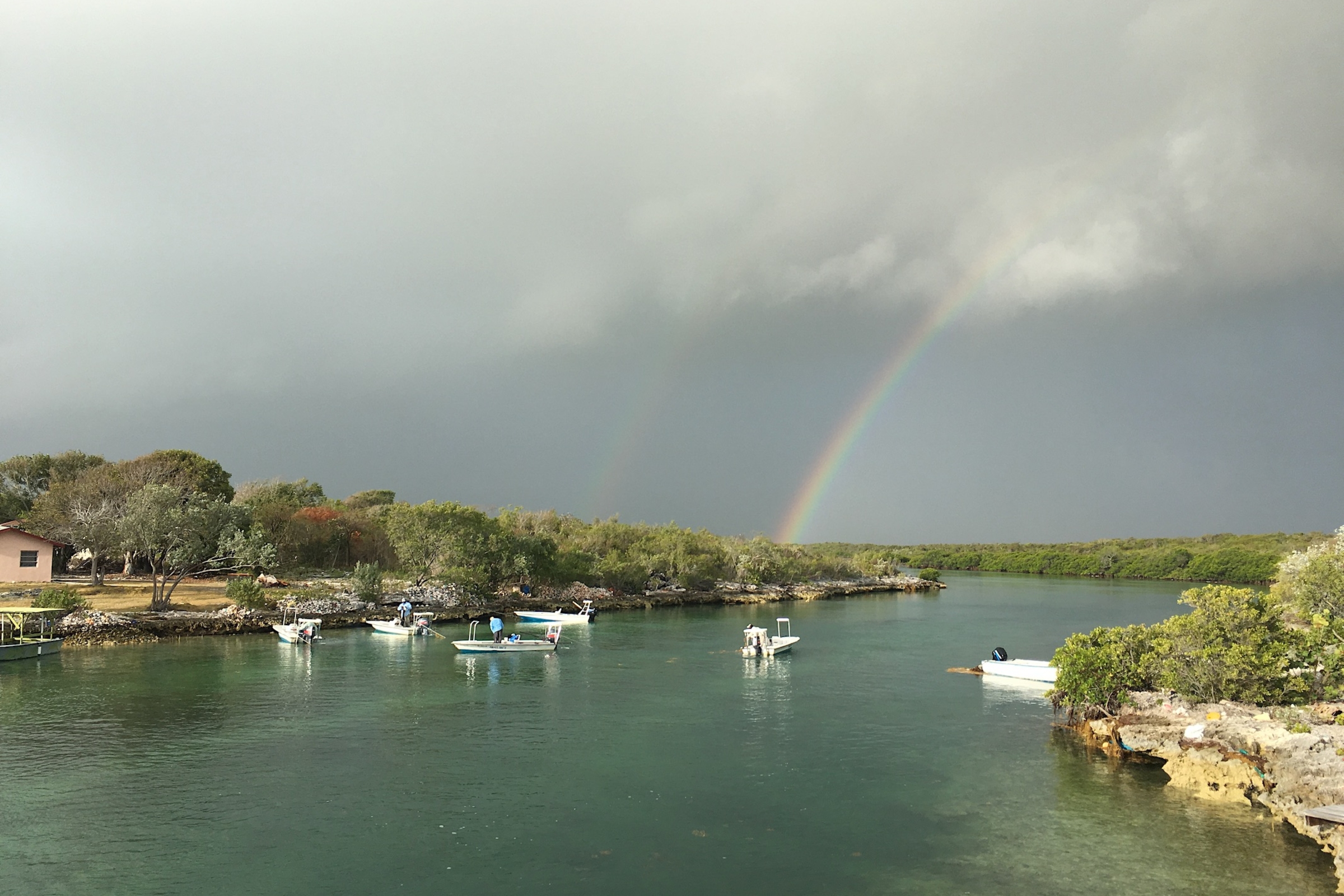Partridge and Saffron
With Spring already in full effect, and insect hatches occuring with some predictability, thoughts of late evenings in May and early June begin to swirl in our minds. In WNC, late Spring means Yellow Sally Stoneflies, and that means fishing yellow flies can be effective whether insects are hatching, or not. This take on a traditional soft hackle style fly, incorporates a little flash on the back to show up better in some of our faster moving streams. It can be fished as a dropper off of a dry, or nymph, and would be an excellent stand alone swinging fly in larger sizes.
Ingredients
Hook: Daiichi 1260- Size 16
Thread: Veevus 10/0- Sunburst Yellow
Rib: Ultra Wire Brassie- Amber
Flashback: MFC Kreelex Mottled Gold
Abdomen: Veevus 10/0- Sunburst Yellow
Thorax: Whitlock's SLF Golden Stone
Collar: Hungarian Partridge
Step 1: Tie onto the hook approximately 1/4 of the way back from the hookeye. Maintaing this space will ensure a better looking Thorax and Thread Head in the end. Be sure to lay down and even thread base to the end point on the shank.

Step 2: Tie in the Amber Wire by the tip at the thread's starting point. Wrap back over the wire to the rear of the fly. Try to maintain the wire's position on the side of the hook. This will give the fly a better profile.

Step 3: Travel back to the thread's starting point, and tie in the Kreelex. Wrap back over the Kreelex to the rear of the fly while maintaining the Kreelex's position on top of the hook.

Step 4: Construct a tapered thread body with the width of the body increasing toward the front. Take your time for a more esthetically pleasing abdomen.

Step 5: Fold the Kreelex forward and tie off at the thread's starting point. Maintain the Kreelex's position on top of the hook.

Step 6: Wrap the Amber Wire forward to form a rib.

Step 7: Twist dub the abdomen using the SLF Dubbing. This dubbing ball should be slightly larger than the thread abdomen. This dubbing will help keep the Partridge Feather open and moving.

Step 8: Select a Partridge Feather to match your hook size. This is personal preference, but having the tips of the fibers slightly longer than the hook bend looks nice. Strip the fluff from the bottom of the feather, and separate the tip from the rest of the fibers. Trim the tip off, leaving a small triangle for a lash point.

Step 9: Tie the Partridge Feather in by the tip with the cup of the feather facing toward the rear of the fly.

Step 10: Wrap the Partridge Feather approximately 1.5 times around the shank. Tie off, and trim the stem. Create a small thread head behind the hook eye, and whip finish. (Optional) Varnish the thread head "to taste".



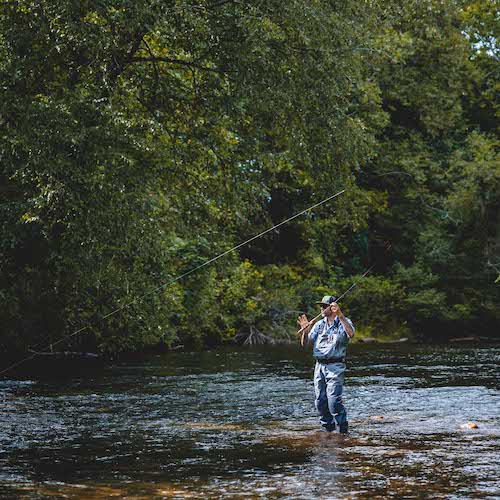 Stream Report
Stream Report Seasonal Hatches
Seasonal Hatches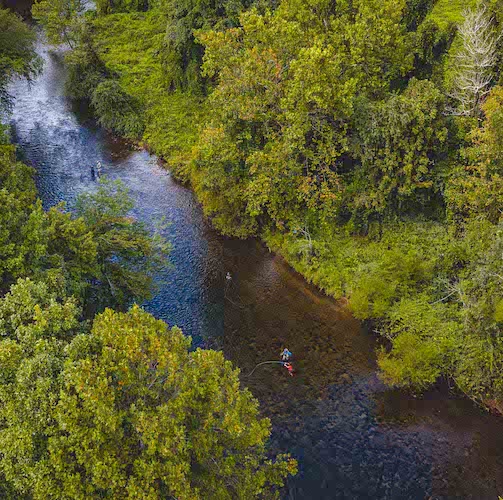 Stream Guide
Stream Guide